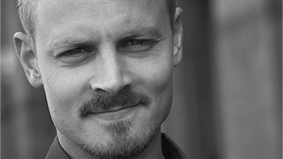When I first started working in digital back in the time of the dot-com bubble, many people obsessed about so-called ‘first mover advantage’. Within the context provided by the digital goldrush of the time, the thinking went that if you arrived first with your innovation, you could plant your flag and rapidly attain a lead over competitors that was unassailable.
People soon found out of-course that benefit often lay in being second or even third to market, since you could then avoid and learn from the mistakes already made by your competitors and create a better product (it’s kind of ironic that Marc Andreessen is now saying that all of the dot-com ideas were basically correct but were just ahead of their time, and are actually happening now. I agree insofar as amongst more than a few turkeys, there were indeed some ideas that were genuinely ahead of their time).
This long but good talk by Malcolm Gladwell argues this same point but does so using some great examples including the so-called Bekaa Valley Turkey Shoot in which Israel scored a comprehensive victory in a battle with Syrian forces in 1982 by reapplying technologies created by other countries in innovative ways. He also gives a good re-telling of the story about how Steve Jobs took ideas that were originated at Xerox parc (including the Graphical User Interface, or GUI, and the mouse) and used them to reimagine the PC that Apple was developing at the time and take them to market.
Please accept targeting cookies to see this content
Technology, says Gladwell, can move faster than our understanding of it, so being second or even third allows businesses to understand the evolution of what people actually want (witness, he says, the evolution between the first mainstream social network Friendster, MySpace which came after it, and then Facebook). Steve Jobs was brilliant at ‘tweaking’, and one of the reasons(according to economists Ralf Meisenzahl and Joel Mokyr who talked about the three roles within innovation – the inventor, the implementer, the tweaker) that the industrial revolution started in England and not another Western European country, was due to a larger population of skilled artisans and engineers (‘a nation of tweakers’) who could refine and commercialise the inventions of the time.
All this reminded me of this short piece (highlighting conclusions from the Booz & Co Innovation 1000 study) comparing the three different, but each very successful, approaches to innovation taken by Apple (‘need seekers’), Google (‘tech drivers’) and Samsung (‘market readers’). I’m struck by the common need across all three approaches (even those characterised by being reactive rather than initiative) to be extremely nimble.
As a tangential point, Gladwell has a new book out next year on the subject of underdogs in which he describes how (counterintuitively) often underdogs usurp expectations by defeating competitors who are much larger, or apparently stronger than they are. This is often because they refuse to compete by the same standards as their opponent and instead use an entirely different strategy that exploits their stronger opponent’s weaknesses (in business, akin to the judo strategy, or a way of disruptive innovation). At a more individual level, he says that prestige can be constricting (“the best thing you can do mid-career is start over”) and some of the most innovative people are underdogs who, usually through trying life circumstances, don’t struggle with the “over-prediction fear,” or the belief that many people have that intimidating events will be worse than they really are. This mindset frees people to be more creative.
Image courtesy




